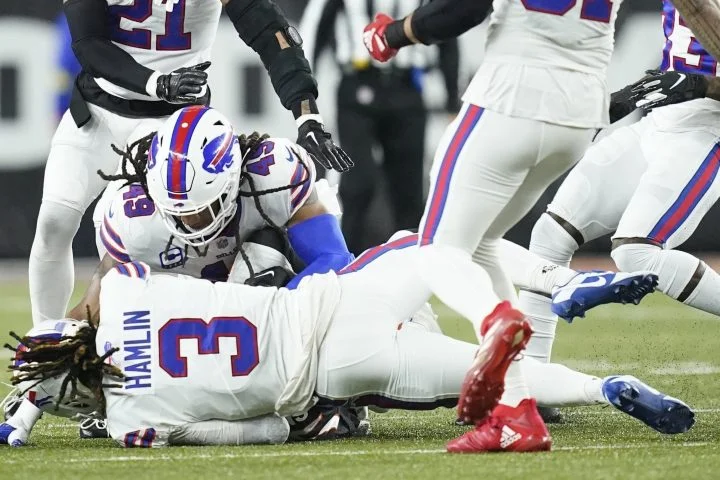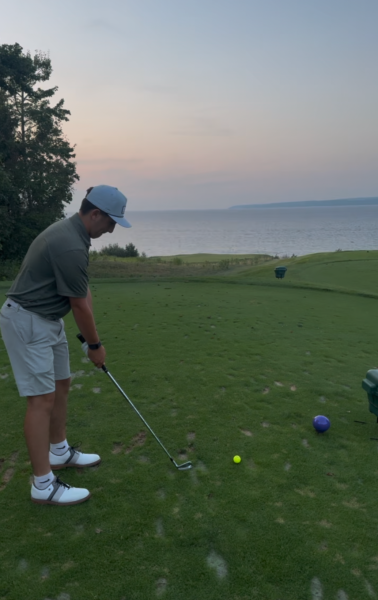The Nationwide Case for Injury Awareness in Football
Buffalo Bills safety Damar Hamlin falls to the ground after tackling Cincinnati Bengals receiver Tee Higgins.
On January 2, 2023, the sports world saw the dangers of football when Buffalo Bills safety Damar Hamlin collapsed in the middle of a Monday Night game between the Bills and the Cincinnati Bengals.
Hamlin made a defensive play that football fans had seen millions of times before: Bengals receiver Tee Higgins caught the ball, ran across the middle of the field, and was tackled by Hamlin. It was routine. It was normal. And then Hamlin stood up, took a few steps, and collapsed on the ground. Viewers of Monday Night Football thought that it may have just been a normal injury, but then they began to administer CPR to Hamlin, and the severity of the situation came to fruition.
The Bills-Bengals game was canceled, and the entire NFL came together to honor Hamlin, who was unconscious in the hospital. News reports later revealed that he had suffered a cardiac arrest in the middle of the game. After a few weeks of recovery, Hamlin is conscious and doing better. But the lasting impact on the football world remains.
Hamlin’s collapse has caused a resurgence in concerns over the health and safety of athletes. A few years back, concussions became a serious issue that the NFL was committed to fixing. After safety measures improved, the worries died down, but they have now returned following Hamlin’s collapse. While Hamlin’s injury itself was the result of a rare condition, it re-ignited discussions about chronic traumatic encephalopathy (CTE), a dangerous brain condition that results from constant head trauma. CTE is commonly found in football players because of various injuries obtained during their careers. Infamous cases, such as Aaron Hernandez and Junior Seau, resulted in those players having serious legal issues. Their brain injuries eventually led to them committing suicide.
Senior wide receiver and linebacker Grant Clark has suffered from “four injuries. I strained all four muscles in my right rotator cuff, almost completely tore my left ACL, sprained my right hamstring, and sprained my groin.” Despite this, Clark never really had a fear of getting injured. “I didn’t really think of it. I knew it was a possibility, but I didn’t want to get into the mindset of “I’ll get injured if I do this.” Unlike most, Clark thinks that there is “already enough awareness of injuries for football. It’s a rough and violent sport, so you can’t expect to play the game without getting hurt. That’s just a part of the game.” When asked about concussions specifically, Clark responds “They definitely are a danger. I’ve had three concussions since sixth grade when I first started playing football. They are just another risk you have to take when playing the sport.” There is room for improvement and ways to lower the likelihood of injuries, though, and Clark acknowledges this. “We need to improve the funding for our program and our weight room. Lifting weights and staying in shape is a way to not just stay healthy, but also to prevent injuries.”
Fans and critics alike have called for increased awareness and action regarding injuries in the NFL. People were given a reality check when the world’s most violent sport had its dangers suddenly exposed. While severe injuries in the NFL are rare, they can happen to anyone at any time, and this realization has made a lot of fans and players more aware of how dangerous the sport can be.

Hey everyone! My name is Aiden. I’m so excited to be your copy editor this upcoming year! I am a senior and this is my third year on the staff of the...







